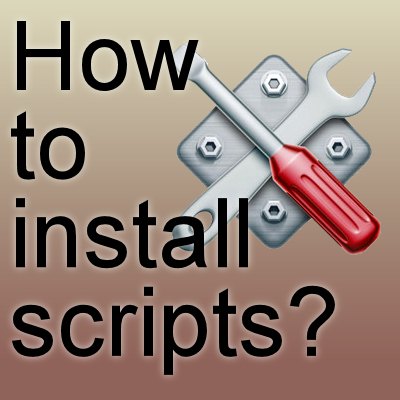PaintShop Pro has the ability to offer an automated process to perform various tasks. This feature has been introduced in PaintShop Pro 8, so, 10 versions ago! Scripts are a set of commands that are executed on their own, often with minimal input from the user. Scripts are useful as they will perform tasks faster than a user could replicating the tasks manually, and often add precision to the process since it will repeat the steps with pixel precision. Additionally, the script can do calculations, making it even faster to complete a process.
Where do you get scripts?
Although you can create, record and code your own scripts, you can also find various places to download them. Some are free (like Suz's scripts) and some are paid (like in Creation Cassel's store). If you create your own scripts, they will automatically be saved in the correct folder for you, so you don't have to install them.
What do I do with the downloaded script?
Once you have downloaded a script, you will find that it will normally come in a zip format. So the first step will be to unzip this file as it can't be used as-is. For details on how to unzip a file and what to use, check out the post on Unzipping your downloads. Once you have unzipped the file, you need to check if there is a README file. Often, such a file will give you the instructions as to where to place the script file as there are 2 possible locations.
Trusted or Restricted script?
When you installed your PaintShop Pro, it automatically created a series of folders, usually in a location like C:\Users\User\Documents\Corel PaintShop Pro\18.0 (18.0 could be replaced by your version of PSP). If you have a version that is older than 14, the path will likely be something like this: C:\Users\User\Documents\My PSP Files where there is no specific version number.
Inside that folder, you will find over 20 sub-folders, named based on various tools in PaintShop Pro. Two of those are Scripts-Restricted and Scripts-Trusted. By default, it is simpler to put the .pspscript file (which is the script file) in the Scripts-Restricted folder. If, on the other hand, there is a README file and this one instructs you to save in the Scripts-Trusted, go ahead.
What about other files?
Occasionally, a script will require other supplies, like texture, a brush, a tube or vector shape. Those should be included in the zip file and be available to you when you unzip the file. Some files are easy enough to identify and place in the correct sub-folder. For example, a file ending with .psptube or .pspshape will obviously go in the Picture Tube folder or the Preset Shape folder, but other files are not so obvious. In that case, make sure you read the README file for instructions. If you don't have instructions and you find other files in the zip, here are the usual location for them (although it is not an absolute certainty they will go there).
- .pspbrush will go in the Brushes folder
- .pspgradient will go in the Gradient folder
- .jpg files will usually go in the Patterns folder but if they are black and white, they might go in the Textures folder
- .pspshape will go in the Preset Shapes folder
- .PspStyledLine will go in the Styled Line folder
- .pspscript: if the name starts with Preset_, it will go in the Preset folder; if it starts with BrushTip_ it will go in the Brushes folder; otherwise, it will go in either the Scripts-Restricted or Scripts-Trusted (I know, it can be confusing!)
Of course, you might have other types of files so you will need to find instructions on how to save and use them. If you don't place all the files in the correct folders, you might end up with an error when running the script as it will be looking for supplies it can't find.
What else?
Basically, at this point, your script would already be installed and ready to use. We'll have another post to help you in how to use scripts. Stay tuned.
Do you have any question about installing or using scripts? Post them in the comment below and I'll make sure to address your questions or concerns.













